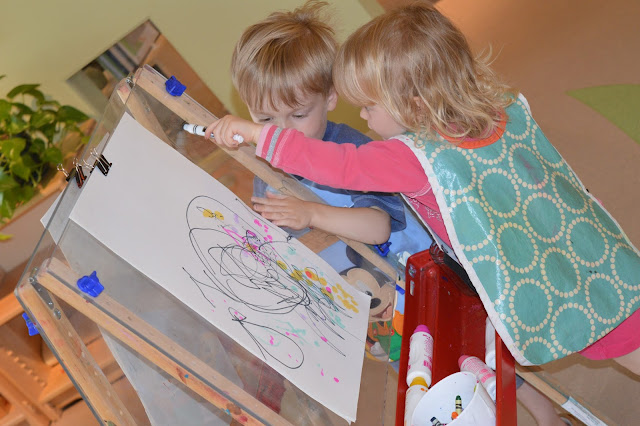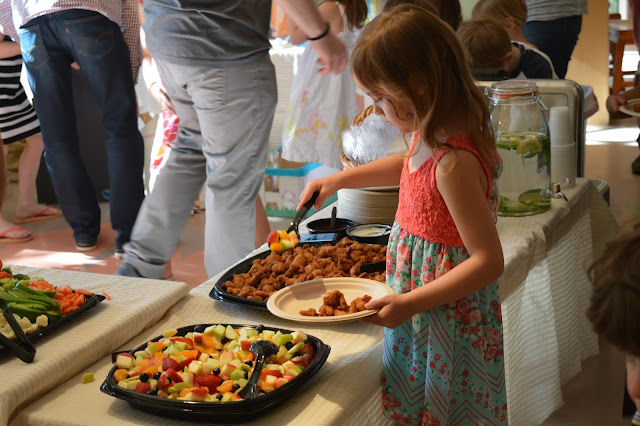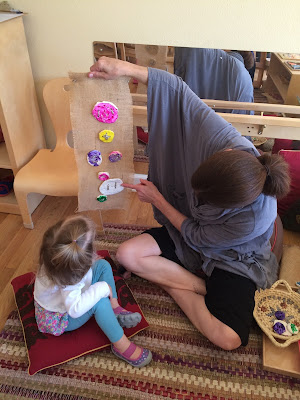Researchers studying the lives of environmentalists have found
a commonality. All of them had encounters with nature as young children that deeply impacted their lives and love of the natural
world. Early experiences may
support the development of ecological values and an ongoing commitment to environmental
stewardship. Sobel (2008) suggests that
stewardship is often the result of “… many hours spent outdoors in a keenly
remembered wild or semi-wild place in childhood or adolescence, and an adult
who taught respect for
nature.'" (p. 9)
Contrary to the idea that teachers/adults need to provide children with nature-based curriculums, what the children actually need are opportunities to explore wild or near-wild places alongside an engaged adult who is ready to listen, observe, be present and offer their own sense of wonder.
The children's question, theories, thoughts and observations really do the rest. The children above, gathered around a large black ant and watched as it carried a dead lady bug on an epic journey across the sidewalk.
Above, the children discovered that the maple leaves outside had a specific smell, "kinda like mango". Soon they were carefully gathering leaves and blooms from the outdoor environment to create a smelling walkway for others to enjoy.
I am often amazed by the sense of curiosity, wonder and presence with which young children interface with life.
They continue to be some of the best teachers I know!
Early experiences with nature appear to provide the
necessary foundation for any type of environmentally responsible behavior
(Sobel, 2008, p. 147). For this reason Sobel recommends that nature experiences should be provided to our children. He
further points out, “Too often in schools, we're trying to inject knowledge
without providing the experiences that allow love to slowly take root and then
flourish..One transcendent experience in nature is worth a thousand
nature facts.” ( p. 12)
Contrary to the idea that teachers/adults need to provide children with nature-based curriculums, what the children actually need are opportunities to explore wild or near-wild places alongside an engaged adult who is ready to listen, observe, be present and offer their own sense of wonder.
The children's question, theories, thoughts and observations really do the rest. The children above, gathered around a large black ant and watched as it carried a dead lady bug on an epic journey across the sidewalk.
Above, the children discovered that the maple leaves outside had a specific smell, "kinda like mango". Soon they were carefully gathering leaves and blooms from the outdoor environment to create a smelling walkway for others to enjoy.
I am often amazed by the sense of curiosity, wonder and presence with which young children interface with life.
They continue to be some of the best teachers I know!
Sobel, D. (2008). Childhood and nature: Design principles
for educators. Portland, MA: Stenhouse.










































